Today, people and various companies across the globe are highly dependent on air travel due to globalization. Behind this marvel of modern transportation lies a complex and fascinating industry, the aviation industry, particularly in the production of aeroplanes. In this blog post we(Business Outreach) explore -The Aircraft Production Saga, Global Insights on Manufacturers, Markets, and Projections.
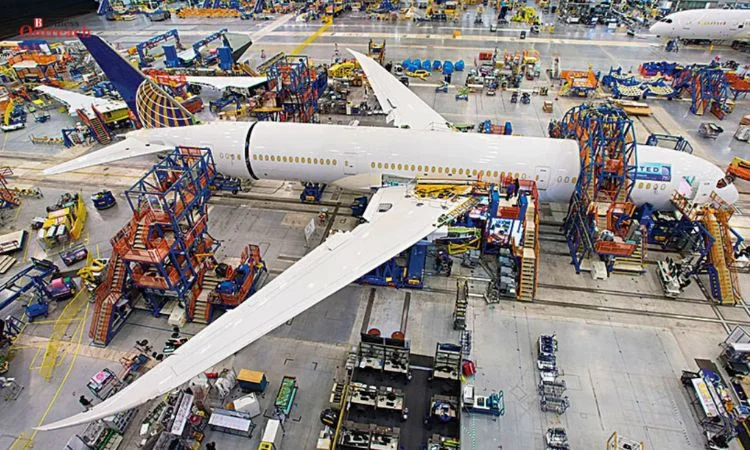
| Table Of Contents |
| The Titans of the Sky: Boeing and Airbus |
| The Battle for Market Dominance |
| Regional and Business Aircraft |
| Emerging Challengers: The Next Generation of Aircraft Manufacturers |
| The Ecosystem of Airplane Manufacturing |
| Engine Manufacturers: The Soul of an Aircraft |
| Avionics and Systems Suppliers |
| Structural and Component Manufacturers |
| The Effect of Technology on Aircraft Manufacturing |
| Challenges in the Airplane Manufacturing Industry |
| The Future of Airplane Manufacturing |
| Conclusion |
The Titans of the Sky: Boeing and Airbus (Airbus can be regarded as a global competitor of Boeing and the civil aerospace industry is not very large)
When it comes to large commercial aircraft, two names dominate the conversation: As to the aircraft manufacturers, Boeing and Airbus are two giants which are able to provide the largest number of aeroplanes in a short time. The above giants have carved their niche among the global market and dominate a common almost-duopoly in the manufacturing of aircrafts for passengers.
Boeing: The American Airplane Manufacturing Companies
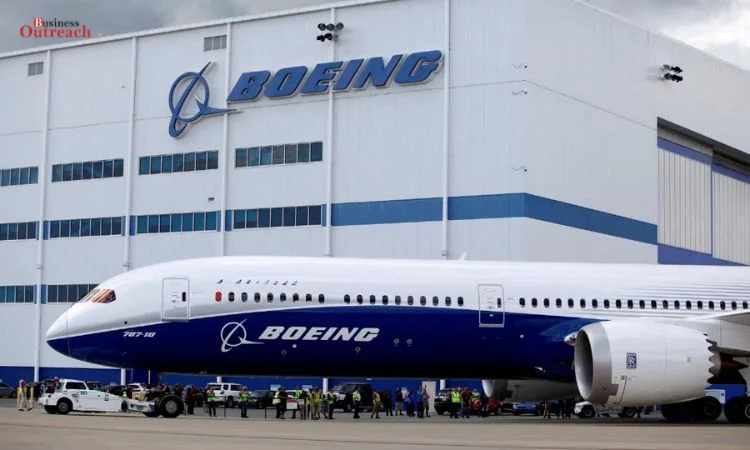
Source: FirstPost
It is a century old company that was originally established in 1916 The Boeing company is the most renowned company in the aviation industry. The organisation’s 7-series of aircrafts has come to signify travelling by air, from the innovative 707 series that introduced the jet age to the present 787 dreamliner.
Key Boeing models include:
– 737: Is considered to be the Single Aisle airplane that isCommercial Aircraft that has sold to date.
– 747: The Skies, which made long distance commuting a reality.
– 777: A large and long-range twin-engine airplane intended for transportation of passengers or cargo located in the large aircraft’s body
– 787 Dreamliner: It is widely used globally for its fuel efficiency features as well as passenger comfort.
That’s why apart from the commercial aviation Boeing has a large share in the defence and space industries. Moreover, the section with the greatest contribution to the total revenue in 2022 was the delivery of various products and services to the United States government emphasizing the significance of the company for national defence and space research.
Airbus: The European Challenger
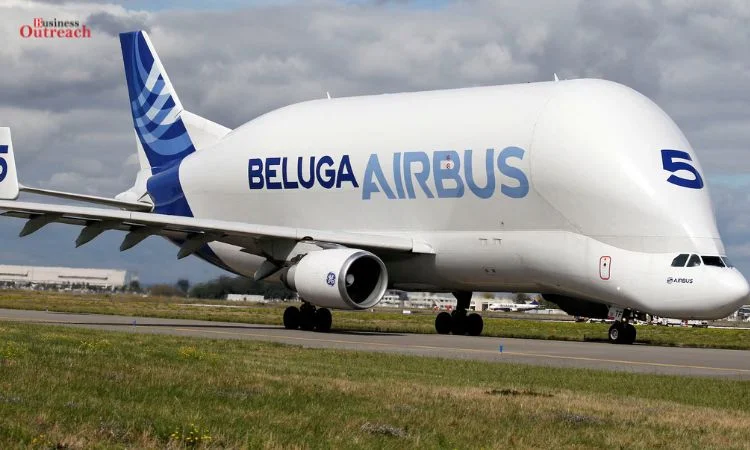
Source: Reuters
Initiated in 1970 as a common European organization, Airbus has grown into Boeing’s direct competitor and, in recent years, a leader of the global commercial airplane market in terms of deliveries. The A-Series of the company’s aircrafts are widely demanded by almost all airlines all over the globe – they provide an opportunity for a client-oriented combination of such factors as efficiency, comfort, and innovations.
Notable Airbus models include:
– A320 family: Boeing’s direct competitor was a low-cost, short-range aircraft commonly developed by another plane maker and already in existence.
– A330: A medium to long-range wide body aeroplane that is suitable to service a variety of routes.
– A350: The latest in the manufacturing company’s line is a long-range twin-engine jet.
– A380: A very large commercial transport plane (production ceased in 2021)
Currently, commercial aircraft stand as Airbus’s primary business with the firm manufacturing military aircraft and defense products that constitute roughly 20 percent of its revenues in 2022.
On the Choice of Conflict Strategy: The Battle for Market Dominance
The Boeing-airbus rivalry is well understood and closely followed maybe because it involves two global industry giants vying for dominance in one another’s backyard. The two firms have always lubricated their competitive battles in the areas of technology, productivity and customer service.
In the last few years, Airbus has outperformed Boeing in delivering planes, mainly because of the issues that Boeing faced with the 737 MAX, production stoppage. But the position is very fluid and complex, and both monopolists continuously develop new products and modify supply strategies to meet consumers’ demands and adjust to the market situation.
Regional and Business Aircraft
Though both Boeing and Airbus Companies control almost the large commercial aircraft market, other manufacturers perform very major and unique roles in meeting the needs of the different sectors in this industry.
Bombardier: The Canadian Contender

Source: 1000 Logos
Bombardier is from Montreal and has competitively penetrated the market within regional as well as business jets. The CL IX regional jet commonly known as CRJ series of regional commercial aircraft and Global series of business aircraft has been accepted by airlines and other users globally.
Embraer: Brazil’s Aviation Pride
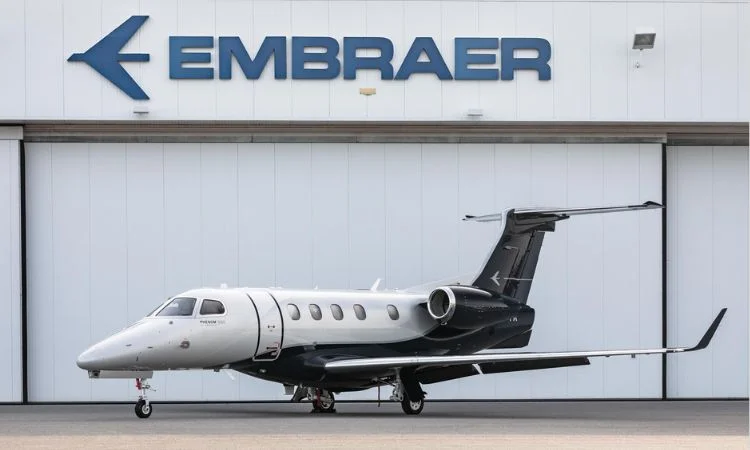
Source: FlightGlobal
Another major competitor operating in the regional and business aircraft market is Embraer having its operational hub in São Paulo. The company’s portfolio mainly consists of the E-Jet family of regional airliners and the Phenom series of business jets which may be said to have established its noteworthy market share.
The Aircraft manufacturers that compete with BCA & EMB are Bombardier & Embraer, and they have specialized in the production of smaller aircraft with seating capacity of between 70-130 passengers. Thus, they were able to develop a clear niche, actually, one that has helped them not to compete head on with Boeing and Airbus while addressing an important role in the air transport market.
Emerging Challengers: The Next Generation of Aircraft Manufacturers
Today Boeing and Airbus are in the leadership of the large commercial aircraft market, however; new competitors appeared, mainly Asian and Russian. These companies wish to upset the duopoly and get a hold of several of the steadily growing international demand for new passengers’ aircrafts.
Comac: China’s Aviation Ambitions
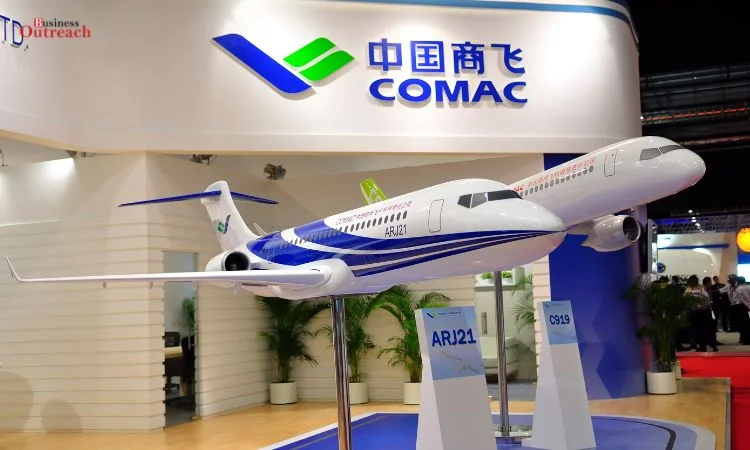
Source: SimpleFlying
Therefore, the Commercial Aircraft Corporation of China (Comac) is China’s attempt at stepping into the international market and becoming one of the leading players in the Aircraft industry. The firm’s C919 narrow-body airliner that has been developed to rival Boeing’s 737 and Airbus Company’s A320 was launched into the commercial market in 2023. Comac is at the present serving the domestic Chinese market, however, the company’s aircrafts are positioned for the global market.
Mitsubishi Aircraft Corporation: The Regional Jet Vision of Japan
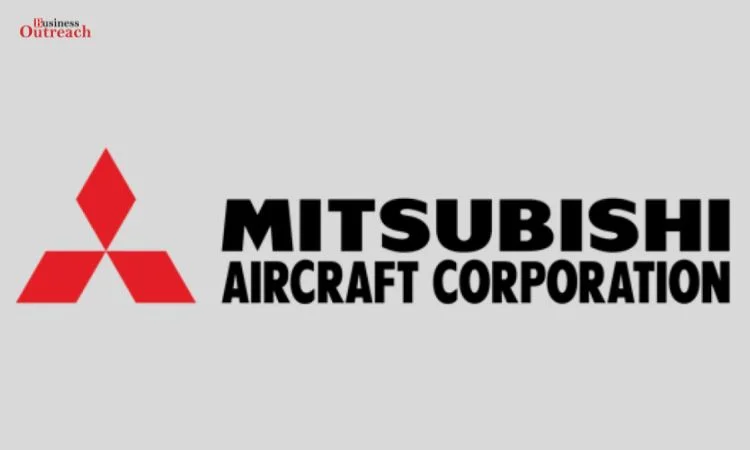
Source: Wikimedia Common
Mitsubishi Aircraft Corporation, a subsidiary of Mitsubishi Heavy Industries, has been working on SpaceJet, which used to be known as Mitsubishi Regional Jet. Despite the fact that the program has fallen behind schedule and some set-backs occurred, the program could represent Japan’s bid to get back into the commercial aircraft manufacturing business.
United Aircraft Corporation (UAC)

Source: Crisis Cross Tamizh
UAC is a Russian company which was established after the integration of a number of aircraft manufacturing companies of the Soviet Union. It assembles and manufactures military and civilian aircrafts such as the Sukhoi Superjet 100 regional transport Aircraft and Irkut MC-21 narrow-body Aircraft in production.
These new entrant manufacturers have their problems in challenging the incumbents, regulation certificated that are programmed to enhance the existing manufacturers and achieving adequate scale and perceived credibility among the airlines and passengers. I agree with the stance to some extent as their entry into the market may in the long run force competition and development.
The Ecosystem of Airplane Manufacturing: A few others that are not quite at par with the OEMs include
It can be seen that the actual aeroplane manufacturing processes are divided and outsourced between a large number of first tier suppliers and many partners of the final aeroplane manufacturers such as Boeing and Airbus.
Engine Manufacturers: The Soul of an Aircraft
Jets or jet engines are possibly the most essential and complex systems in contemporary airplanes:
1. Raytheon Technologies Corporation (RTX): As it can be seen, United Technologies fused with its counterpart Raytheon Company to create RTX, which falls under the aerospace and defense industry. It has a division that produces aircraft engines and that division, Pratt and Whitney is ranked amongst the best in the world.
2. General Electric (GE): This division is known as the GE Aerospace that offers various kinds of jet engines for commercial and military aircraft.
3. Rolls-Royce: It’s the British company famous for its engines on such airplane types as the Boeing 787 and Airbus A350.
4. CFM International: GE and Safran Aircraft Engines have the 50-50 partnership for CFM, which supply the commercial aircraft with the renowned CFM56 and LEAP engines.
Some of these engine manufacturers dedicate a large chunk of their budget to research aimed at increasing efficiency and decreasing pollution of emissions. They have a great impact on the defining of capabilities and cost structures with reference to new designs of aircrafts.
Avionics and Systems Suppliers
The aircrafts of the recent past are giant machines with numerous black boxes and complicated electronics.
Companies specializing in avionics and aircraft systems play a vital role in the manufacturing process:
1. Honeywell: One of the largest global suppliers for avionics, aircraft engines, instruments, and systems.
2. Collins Aerospace: Being a subsidiary to Raytheon Technologies, Collins offers numerous aerospace products including systems and parts.
3. Thales: The French is a company dealing with products like avionics and in-flight entertainment systems.
4. Garmin: Another company, Garmin that is famous for GPS devices also offers avionic equipment for general aviation as well as business aircraft.
These companies include such avionics manufacturers as the producers of the enhanced navigation systems, the flight management computers, and other electronics specifying the contemporary aircraft work.
Structural and Component Manufacturers
Numerous companies specialize in producing the various structural elements and components that make up an aircraft:
1. Spirit AeroSystems: The world’s one of the largest aerostructures and components solution providers for commercial aircraft manufacturers.
2. Triumph Group: Offers different kinds of aerospace structures, systems, and accessories.
3. Liebherr-Aerospace: Successively produces aircraft air management systems; flight control and actuation systems; landing gear; electronics.
Effect of Technology on Manufacture of Aircraft
The aeroplane manufacturing industry is one of the dynamic industries of the modern world because of the improvement of technology plus the changes that occur in the market.
Several key trends are shaping the future of aircraft production:
1. Composite Materials: Today’s commercial aircrafts such as Boeing 787 copy and Airbus a350 heavily use composite material to minimize the weight and to increase fuel efficiency.
2. Additive Manufacturing (3D Printing): This technology is applied nowadays in industry to manufacture complex parts for which it may substantially reduce the weight and manufacturing cost.
3. Artificial Intelligence and Big Data: AI and Data Analytics are already used today for updating the design and manufacturing of the aircraft as well as for better predictability in maintenance.
4. Electric and Hybrid-Electric Propulsion: Controlling the emissions is an important issue due to climate change concerns; thus, electric or hybrid electric propulsion systems are under consideration for future planes.
5. Advanced Manufacturing Techniques: Overall, the major modern trends in the production process of aircrafts are robotics, automation, and digital twin methods.
It refers to the techniques used in construction and some other attributes of the aircrafts are also affected by these innovations.
The Aeroplane Manufacturing Industry Faces Several Significant Challenges:
1. Supply Chain Disruptions: This paper seeks to establish that the COVID-19 pandemic exposed the fragility of supply chain networks. Business managers are currently trying to establish robust and versatile supply chain systems.
2. Regulatory Hurdles: The incidents regarding the Boeing 737 MAX jet gave emphasis on safety certification procedures. The ignorance of the multiple and varying international regulatory frameworks still poses a problem to many manufacturers.
3. Environmental Concerns: Aviation industry faces certain challenges and one of them is the need to minimize the emission of greenhouse gases. Automotive makers are doubling their efforts with passive designs and working on novel possibilities in powertrains.
4. Geopolitical Tensions: The industry suffers from trade tensions because aircraft manufacturing is business international, which makes production changes in supply chain or entry, or opportunities, in different markets vulnerable to political conflicts.
5. Skilled Workforce Shortages: The industry is capacity intensive and there are serious issues on executing qualified human resources to compete with other high tech sectors.
Challenges on the Future of Airplane Manufacturing
As we look to the future, several trends are likely to shape the airplane manufacturing industry:
1. Sustainability Focus: Anticipate more focus on working on the creation of more efficient airplanes and other operational modes as well as trying to find other types of fuel and methods of propulsion.
2. Urban Air Mobility: Expansion of eVTOL aircraft type can also create new opportunities for manufacturers in the sphere of urban air mobility.
3. Supersonic Revival: This is because several firms are developing new supersonic transport for passengers which could potentially bail the segment that slowed down after the retirement of Concorde.
4. Increased Automation: It can be considered that the progressive developments in robotics and artificial intelligence will take an even more significant position in the construction of aircraft alongside the manufacturing processes.
5. Market Shifts: As for the developing countries, especially those located in Asia, their increasing importance will make a dramatic impact on aircraft development and manufacturing concepts.
6. New Materials: Future improvements in the used materials could make the whole airplane even lighter and more resistant offering better efficiency at the same time.
Conclusion
The airplane manufacturing industry is in the sphere of technology, international business, and human aspiration. As for the major players in the market of large commercial aircraft, leading companies at the moment are Boeing and Airbus; however, this type of industry is rather vast and multifaceted, which is why it is backed by numerous companies and employs millions of people globally.
The major themes of Climate change and Climate change and evolving Urbanization and Changing customer demands in the 21 st century are likely to fuel aircraft innovation and design and manufacturing. Everything from better engines for jetliners to completely new forms of aircraft for moving around cities of the future will be defined within the next couple of decades.














